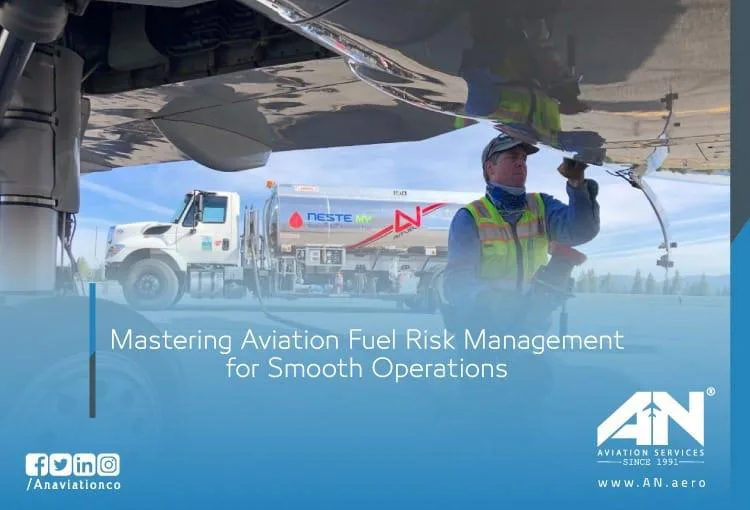
In the aviation industry, fuel is not just a basic necessity—it’s a lifeline. As one of the largest operational costs for airlines and aviation service providers, aviation fuel requires meticulous planning and monitoring to ensure efficient, uninterrupted operations. Aviation fuel risk management is a strategic process that focuses on mitigating potential risks associated with fuel supply, pricing, and quality to ensure smooth and safe flight operations.
In this blog, we’ll dive into the importance of aviation fuel risk management, discuss its various components, and explore how it can impact the broader aviation ecosystem.
What Is Aviation Fuel Risk Management?
Aviation fuel risk management involves a set of practices and strategies designed to identify, evaluate, and mitigate risks associated with aviation fuel. These risks can range from fluctuating fuel prices to disruptions in supply chains or quality issues that could impact aircraft performance.
The primary goal is to minimize operational interruptions and financial losses while maintaining fuel quality and availability. With the aviation industry heavily reliant on consistent fuel delivery, risk management ensures that operations remain efficient, safe, and cost-effective.
The Importance of Managing Aviation Fuel Risks
Aviation fuel is the lifeblood of air travel, but managing it isn’t just about keeping tanks full. It requires addressing numerous variables, including price volatility, environmental concerns, and supply chain vulnerabilities. Here’s why aviation fuel risk management is critical:
Price Volatility:
Fuel prices are notoriously unpredictable, affected by global oil markets, geopolitical events, and demand fluctuations. Effective risk management enables organizations to hedge against these price changes, protecting their bottom line.
Supply Chain Disruptions:
Natural disasters, political instability, or logistical challenges can disrupt fuel supply chains. A robust risk management strategy ensures contingency plans are in place to mitigate these disruptions and maintain steady fuel availability.
Compliance with Regulations:
Environmental standards and aviation fuel quality regulations must be adhered to at all times. Risk management helps organizations remain compliant with international and local laws while meeting operational needs.
Operational Safety:
The quality of aviation fuel directly impacts aircraft performance and passenger safety. Risk management protocols ensure fuel meets stringent quality standards, reducing the risk of engine failures or operational issues.
Key Components of Aviation Fuel Risk Management
Managing aviation fuel risks requires a multifaceted approach that addresses financial, logistical, and safety considerations. Below are the critical components of an effective aviation fuel risk management plan:
1. Fuel Quality Assurance:
Ensuring the quality of aviation fuel is paramount. Contaminated or substandard fuel can lead to significant safety risks, such as engine malfunctions or operational delays. Comprehensive quality checks are conducted during fuel procurement, storage, and delivery to prevent contamination.
2. Price Risk Management:
Fuel prices can be volatile, and even small fluctuations can have a massive impact on operating costs. Airlines and aviation operators often use financial instruments such as fuel hedging to stabilize costs. This involves locking in future fuel prices to protect against market swings.
3. Supply Chain Monitoring:
The aviation industry relies on a vast network of refineries, storage facilities, and distribution channels. Monitoring this supply chain in real time helps identify potential bottlenecks or disruptions, ensuring that fuel is always available where and when it’s needed.
4. Regulatory Compliance:
From environmental laws to fuel specifications, staying compliant with aviation fuel regulations is non-negotiable. Risk management strategies incorporate adherence to guidelines set by organizations such as the International Air Transport Association (IATA) and local aviation authorities.
5. Crisis Management Plans:
Despite the best precautions, emergencies such as fuel shortages or contamination can occur. Having a crisis management plan in place ensures that airlines and operators can respond swiftly and effectively, minimizing downtime and operational risks.
Challenges in Aviation Fuel Risk Management
While risk management provides a structured approach to handling aviation fuel, it is not without its challenges. Some of the most pressing issues include:
- Global Dependency on Fossil Fuels: Despite advancements in sustainable aviation fuel (SAF), the industry remains heavily reliant on traditional jet fuel, making it susceptible to global oil market fluctuations.
- Environmental Pressures: Increasing regulations on greenhouse gas emissions put additional pressure on operators to adopt cleaner fuel alternatives, which may be costlier or harder to source.
- Technology Integration: Leveraging artificial intelligence (AI) and real-time analytics in risk management requires significant investment and expertise, which can be a hurdle for smaller operators.
How Technology Enhances Fuel Risk Management?
The use of technology has significantly transformed how aviation fuel risks are managed. Tools such as AI-powered predictive analytics and blockchain-enabled supply chain monitoring offer real-time insights and increased transparency. For instance:
- AI and Machine Learning: These technologies can predict price trends, fuel demand, and potential disruptions, enabling better decision-making.
- Blockchain for Transparency: By tracking every step of the fuel supply chain, blockchain ensures accountability and reduces the risk of fraud or errors.
- IoT Sensors: Internet of Things (IoT) devices monitor fuel storage conditions, such as temperature and pressure, ensuring optimal quality is maintained.
The Role of Sustainable Aviation Fuel (SAF)
As the aviation industry works toward reducing its environmental footprint, sustainable aviation fuel (SAF) is emerging as a key player in fuel risk management. Derived from renewable resources, SAF offers a more sustainable alternative to traditional jet fuel, reducing greenhouse gas emissions by up to 80% over its lifecycle.
While SAF adoption is still in its early stages, incorporating it into fuel management strategies can help organizations mitigate risks associated with regulatory pressures and environmental concerns. However, challenges such as limited availability and higher costs must be addressed before SAF becomes a mainstream solution.
Conclusion: A Necessity for Smooth Operations
Aviation fuel risk management is no longer a luxury—it’s a necessity in today’s complex and dynamic aviation environment. By addressing risks associated with price volatility, supply chain disruptions, and fuel quality, airlines and operators can ensure smooth and efficient operations while protecting their financial stability.
Moreover, as the industry shifts towards sustainable alternatives like SAF and adopts advanced technologies, fuel risk management will continue to evolve. By staying ahead of these trends, aviation stakeholders can enhance operational efficiency, improve safety, and contribute to a more sustainable future for air travel.

